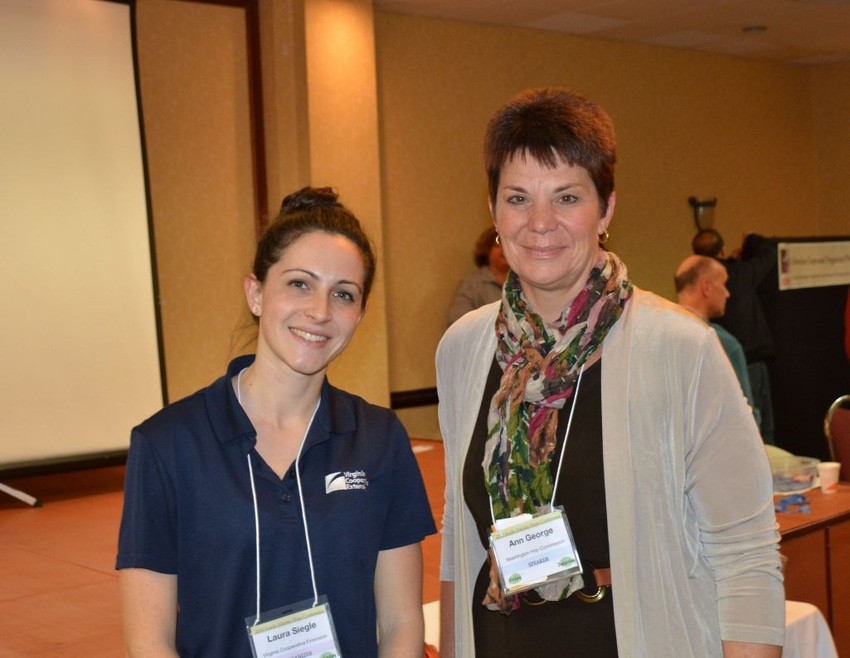
The craft beer industry has taken off in North Carolina and Virginia, and farmers in both states are beginning to grow hops to meet the needs of local brewers.
Growing hops is a challenge in the South Atlantic region because of the climate. Most hops in the United States are grown in the Pacific Northwest where the climate is ideal. But as the craft beer industry grows across the country, more farmers are beginning to grow hops in non-traditional regions to provide locally-grown hops to local breweries.
Hops are a growing specialty crop in North Carolina and Virginia. North Carolina State University and Virginia Tech are serving the burgeoning industry with varietal development and research. Ann George, executive director of Hop Growers of America based in Moxee, Wash., says the established hops growing players call the South Atlantic and other new hop growing regions “the new wave” because of the interest of growing hops in different parts of the country.
Speaking at the South Atlantic Hops Conference in Richmond, George said the craft beer industry is a key factor for the rapidly expanding hops industry in the United States.
“Hops acreage in 2015 was the highest ever in the United States. The thing that pushed it up was all of you,” George told the hops growers.
In 2015, a record 1,200 acres of hops were grown outside of the Pacific Northwest and even more acreage is expected this year. Craft beer accounts for less than 20 percent of U.S. beer volume but is approaching 50 percent of hops usage.
“Craft beer growth over the last 20 years has dramatically increased the demand for hops. Traditional pilsner uses a quarter of a pound of hops be barrel, compared to craft beer that uses and average of 1.4 pounds of hops be barrel,” George said.
This presents a key opportunity for farmers who want to grow hops because local craft brewers prefer using locally grown hops, George said. She encourages current hops growers and would be hops growers to maintain a close working relationship with local breweries.
“You have to separate from the Pacific Northwest growers. They go for big markets. You have to have relationships with your local breweries. You have to have a game plan that sets you apart from the herd,” George said.
Variety selection is key
For the past five years, the top two hops varieties for craft beer usage were Cascade and Centennial. Craft beer uses aroma varieties while traditional pilsners use alpha varieties.
“Since craft brewing, the United States has made a big switch to aroma from alpha varieties,” George said. “Historically, the U.S. produced 70 percent of the world’s alpha varieties and 30 percent of the world’s aroma varieties. Now we have swapped. We produce about 30 percent alpha varieties and 70 percent aroma varieties.”
Cascade is still the most popular variety for craft beers, but local brewers are looking for other varieties with different flavor profiles. George said hops growers need to work with their local brewers to provide the hops varieties that will meet this need.
“Brewers really want something different and if you can get them to grow here, the brewers really will be happy to work with you,” she said. “I can’t tell you how many people have called me and said ‘I have a couple of acres, I’d really like to grow hops, what variety should I grow?’ I ask them ‘what variety can you sell? Your customer will drive your variety selection.”
Proprietary varieties make up about 50 percent of U.S. hops acreage, but these varieties are privately own and a growing region must prove that they can meet quality demands before they are expanded to new regions.
“The owners of these proprietary varieties hand pick the growers and check them out all of the time because they are very picky about quality,” George said. “You’re not going to have access to a lot of the proprietary varieties at least for a few years until you can prove yourselves as a growing region and those companies are willing to come in here and test those varieties in your climate. You need to look at the public varieties. Test a number of different varieties and see how they work out.”
In the meantime, Dave Warwick, brewmaster at Three Notch’d Brewing Co., in Charlottesville, said they key factor in the growth of craft beer in Virginia was the passage of Senate Bill 604 that allowed craft brewers to sell their beer on premises.
In 2011, prior to passage, there were 44 craft breweries in the commonwealth. In 2015, there were 142 craft breweries, a growth of well over 200 percent. “It was a game changer for craft beer in Virginia,” Warwick said.
IPAs are still the leading style of beer that craft breweries are producing. “That’s been the case for several years now, and it means that hop demand is still there. Brewers are looking at using different hops or experimental hops to give their beers different flavor profiles that the consumer wants,” he said.
For hop growers to be successful, they must work closely with breweries and keep the line of communication open, said Brian Nelson, head brewer at Hardywood Park Craft Brewery in Richmond.
“We expect hops growers to bring all the data requested,” he said.
Hops growers in Virginia must have a sample of their crop analyzed by Virginia Tech for such traits as alpha acids, beta acids and essential oils before a brewer will agree to purchase their hops. “Brewers must know the content of the hops coming in,” Nelson said.
About the Author(s)
You May Also Like






